For Takamichi Onozaki, whose open heart and gentle spirit made two foreigners feel at home.The experience of living with him and his family greatly deepened our understanding and appreciation of Japanese culture and foods. His wisdom, courage and confidence in us were our inspiration for making miso in the United States.We will be forever grateful.
ACKNOWLEDGMENTS
This book would not have been written or even imagined without the efforts of hundreds of natural foods pioneers who created the interest and markets for high quality Japanese natural foods. Jan and I are particularly indebted to the early Zen and macrobiotic movements that created the opportunity for companies such as Erewhon, Eden, Oak Feed, Essene,Westbrae, Natural Import Company, Tree of Life, Great Eastern Sun, Granum, Clearspring, Natural Lifestyles, Gold Mine, Edwards & Sons and others to begin importing and distributing traditional Japanese foods.Without the great efforts of these companies and people, these foods would never have become so popular and well known in the West. In this regard we would like to acknowledge the outstanding achievements of Michio and Aveline Kushi, the founders of Erewhon and the leaders of the international macrobiotic movement. We want to recognize the significant influence of Bill Shurtleff and Akiko Aoyagi who began introducing foods from Japan to the West over thirty years ago. Their books about miso, tofu and kudzu have been an inspiration to us.
We would especially like to thank Takamichi and Itsuko Onozaki and family for sharing their home and centuries-old knowledge of Japanese miso craftsmanship. Their adventurous yet traditional spirit as well as their example and teachings has had a profound impact on our lives since our meeting in 1979. We also want to thank Akiyoshi Kazama, founder of Mitoku Company, in Tokyo, Japans largest exporter of traditionally crafted Japanese foods, for maintaining the highest quality standards and for introducing us to Mr. Onozaki. We would also like to express our appreciation to Yuko Okada, one of the founders of Muso Company in Osaka, Japan, international supplier of excellent traditional Japanese foods.
This book would not have been written if it were not for our opportunity to be part of the conception, founding and building of the American Miso Company in Rutherfordton, North Carolina. Natural foods businessman and macrobiotic advocate Sandy Pukel, of Miami, Florida, spearheaded the project of making miso in the United States. Jan and I are grateful for the profound influence he has had on our personal lives. We also want to give special thanks and appreciation to Barry Evans, who has been successful in keeping American Miso Company and Great Eastern Sun going for over twenty-five years.These two companies continue to have an impact on the distribution and availability of quality Japanese foods in the United States and Canada.
Some of the information we have gathered was provided by Mitoku Company and their staff and suppliers. We are particularly indebted to Christopher Dawson, who is now the CEO of Clearspring, in London, and who spent many years at Mitoku. Christopher gave us with a great deal of information about the history and craft of making traditional Japanese foods. We are also very grateful to Tomoko Katagiri, of Mitoku, who has translated Japanese texts and contacted Japanese food experts on our behalf.
Jan and I are also grateful for the culinary expertise of award-winning chef John Belleme, Jr., Chef-Partner of Gotham City Restaurant in Delray Beach, Florida. He was a great source of creative ideas for blending Japanese and Western ingredients in delicious and unique recipes.
I would personally like to thank my long-time friend Lyle Lansdell for sharing with me her passion for natural foods almost forty years ago. Lyle was my first cooking teacher and her love of food had a profoundly positive impact on my life. I am grateful for the help and encouragement of my friend Bill Grier who spent many hours editing my early attempts at food writing. Another person I would like to thank is Jim Mijanovich, M. D., my friend and spiritual mentor, whose patience is second only to Mother Theresas.
We would like to thank all those on the staff of Tuttle Publishing Company, especially Edward Walters, Publishing Director, and Holly Jennings, our editor, for her patience, encouragement and editorial expertise. Finally, thanks to our agent Bob Silverstein for his support of this project.
CHAPTER 1
MISO: A HEALTH SECRET TO SAVOR
Miso, a fermented soy product, is one of the worlds most delicious and versatile medicinal foods. Having originated in China around 800 BCE miso was brought to the Japanese islands with Buddhism around 500 CE . Considered a super food by some ancient and contemporary healers, this ancient Far Eastern staple began appearing in alternative restaurants and food stores in the West in the 1970s, and today it is an essential ingredient in natural foods cuisine. Used to enhance every course, from appetizers to desserts, miso is found in basic natural foods dishes as well as fancy gourmet fare.
It is no wonder that miso has quickly become popular among health-conscious Americans. A good source of essential amino acids and some vitamins and minerals, miso is also low in calories and fat. Centuries of Japanese folklore and recent scientific studies indicate that the daily use of miso can reduce the risk of degenerative disease and contribute significantly to overall health.
HEALTH AND WELL - BEING
 It is not any one particular component of miso that makes it such an effective healing food, but rather a complex combination of ingredients and a unique double fermentation process that transforms soybeans and grains into a potent medicine. Whats more, miso may be one of the most underrated foods in the natural foods pantry. After writing and researching more than one hundred twenty articles and four books about food, and having personally experienced the benefits of miso with our friends and family, we feel that using miso regularly is the best health insurance you can have.
It is not any one particular component of miso that makes it such an effective healing food, but rather a complex combination of ingredients and a unique double fermentation process that transforms soybeans and grains into a potent medicine. Whats more, miso may be one of the most underrated foods in the natural foods pantry. After writing and researching more than one hundred twenty articles and four books about food, and having personally experienced the benefits of miso with our friends and family, we feel that using miso regularly is the best health insurance you can have.
Nutritional Benefits
Miso is a good source of iron, calcium, phosphorus, potassium, some B vitamins and protein. Because soybeans contain high amounts of protein, including all essential amino acids (the only such vegetable source), varieties of miso made with mostly soybeans, such as Hatcho and other soybean misos, can be considered an important source of complete protein for those eating a vegan diet. Miso also facilitates the bodys absorption of calcium and magnesium.
Soybeans, which are about 20 percent oil, are an excellent source of high quality polyunsaturated fats such as essential fatty acids (EFAs), however, the majority of the soy oil sold in the United States is made by a process that destroys most of the delicate EFAs. The daily use of soybean miso, which is made with only soybean koji (cultured soybeans), salt and water, is a flavorful way to get EFAs. In fact, misos such as Hatcho are about 10 percent oil and more than 60 percent of this is linolenic (7.5 percent) and linoleic (55.9 percent) acid, two EFAs that are necessary for life but cannot be made by the body.

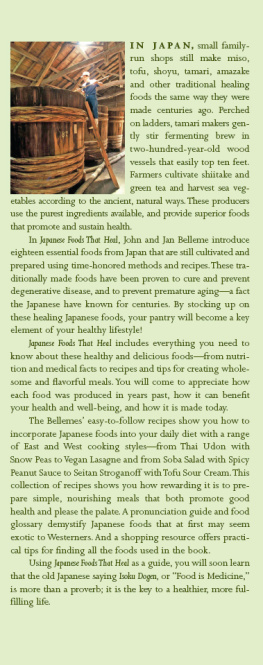
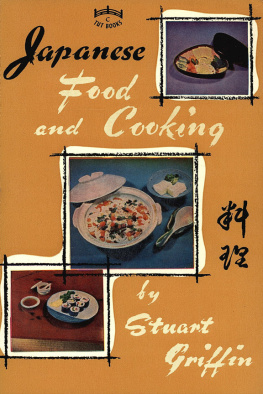

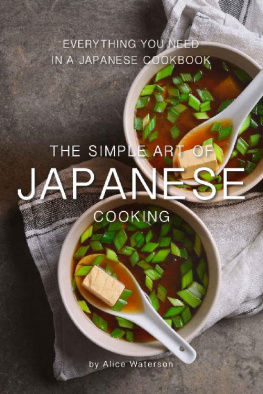



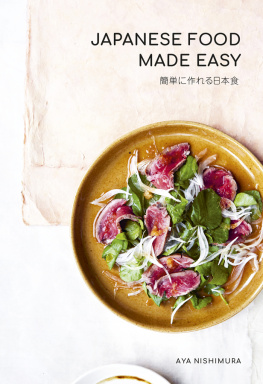
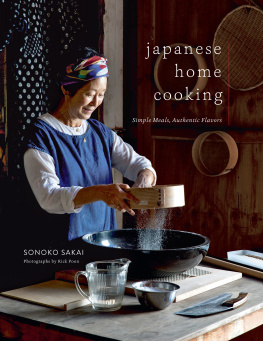
![Miyoko Nishimoto Schinner - Japanese Cooking: Contemporary & Traditional [Simple, Delicious, and Vegan]](/uploads/posts/book/41405/thumbs/miyoko-nishimoto-schinner-japanese-cooking.jpg)
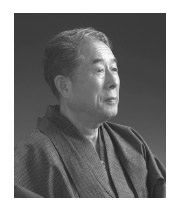



 It is not any one particular component of miso that makes it such an effective healing food, but rather a complex combination of ingredients and a unique double fermentation process that transforms soybeans and grains into a potent medicine. Whats more, miso may be one of the most underrated foods in the natural foods pantry. After writing and researching more than one hundred twenty articles and four books about food, and having personally experienced the benefits of miso with our friends and family, we feel that using miso regularly is the best health insurance you can have.
It is not any one particular component of miso that makes it such an effective healing food, but rather a complex combination of ingredients and a unique double fermentation process that transforms soybeans and grains into a potent medicine. Whats more, miso may be one of the most underrated foods in the natural foods pantry. After writing and researching more than one hundred twenty articles and four books about food, and having personally experienced the benefits of miso with our friends and family, we feel that using miso regularly is the best health insurance you can have.